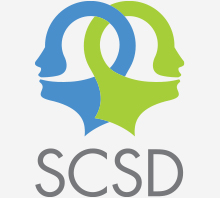The shortage of health professionals has been a frequent topic of discussion in the past few years. Whether you think about speech therapy, occupational or physical therapy, the shortage is noticeable in various environments. Several solutions have been proposed and initiated, but one of the most obvious is to train more students at university. A large part of the training consists of clinical internships. However, given the shortage, it may be difficult to ensure quality internships for all new students. This is the context in which Camp Leap Frog is held, because it creates no fewer than six internship places (two in each of the disciplines mentioned: speech therapy, occupational therapy and physiotherapy). And obviously, this isn’t the only need this project meets.
 Camp Leap Frog is a summer camp offering rehabilitation services to children with multiple handicaps in the mild to moderate range, including the following diagnoses: language delay, fine or gross motor delay, autism and congenital muscular dystrophy. It is important to mention that these children are not eligible to receive services in the healthcare system, given that their problems are not qualified as severe. From this point of view, this program has a major impact on the families and the community. Of the 47 children referred to the project by the Lester B. Pearson School Board, the CLSCs, and the occupational therapist and the physical therapist involved in the project, 12 children between 4 and 6 years of age were selected after the screening process. They participated in Camp Leap Frog five half-days a week for six weeks in the summer of 2010. The camp equipped and prepared them for the transition to school before they entered kindergarten or Grade 1. This is why it is called Camp Leap Frog, or Camp saute-mouton in French. The camp’s activities were conducted in English in the summer of 2010.
Camp Leap Frog is a summer camp offering rehabilitation services to children with multiple handicaps in the mild to moderate range, including the following diagnoses: language delay, fine or gross motor delay, autism and congenital muscular dystrophy. It is important to mention that these children are not eligible to receive services in the healthcare system, given that their problems are not qualified as severe. From this point of view, this program has a major impact on the families and the community. Of the 47 children referred to the project by the Lester B. Pearson School Board, the CLSCs, and the occupational therapist and the physical therapist involved in the project, 12 children between 4 and 6 years of age were selected after the screening process. They participated in Camp Leap Frog five half-days a week for six weeks in the summer of 2010. The camp equipped and prepared them for the transition to school before they entered kindergarten or Grade 1. This is why it is called Camp Leap Frog, or Camp saute-mouton in French. The camp’s activities were conducted in English in the summer of 2010.
Here is a typical day at Camp Leap Frog. In the morning, the children participate in group activities targeting the skills they will need to function well at school, such as hand-eye coordination, balance, and pre-reading skills. The day may begin with an arts and crafts activity facilitated by an occupational therapy intern. Then the children go to the gym for a gymnastics activity prepared by a physical therapy intern, and end up reading a story in a circle with a speech-language pathology intern. Trips and snack breaks are opportunities to prepare the students for school integration. The children also receive individual speech therapy, physical therapy and occupational therapy during the week, as needed. This organization allows interns from different disciplines to learn interdisciplinary work (different professionals working towards common goals for the client) and even transdisciplinary work (different professionals intervening during the same session with the client). For these students, this is a unique opportunity to experiment with these teamwork models, which become increasingly important in different clinical settings, but which few students have a chance to encounter in an internship. In the afternoon, the interns prepare the activities for the days ahead and track the progress of the children for whom they are responsible. Speakers on different topics relevant to the practice or the clientele (e.g.: multiculturalism or behaviour management) also address the group once a week in the afternoon.
Thanks to a partnership with the Lester B. Pearson School Board, the children and the practitioners have been able to benefit from materials, sports equipment, snacks and a place to hold the summer camp, at Riverview Elementary School in Verdun. In an interview, Dr. Susan Rvachew, Project Director and Research Professor at McGill University, emphasized the major role played by Deborah Gross, principal of this elementary school, in carrying out the project.
The reactions of the different people involved were very positive. The children’s parents were extremely appreciative of the services they received for their children. Recall that these children do not usually meet the eligibility criteria for public services. The clinical supervisors, an occupational therapist, a physical therapist and a speech-language pathologist, were greatly involved in the project and some even volunteered for the camp in subsequent years. Finally, the student interns greatly appreciated their experience. Dikla Amar, a recent graduate in speech-language pathology, recalls how much she learned from her interaction with students in other disciplines: “I enjoyed working in a multidisciplinary team very much. I did not find it hard, but rather a great opportunity to learn from others and share my knowledge.”
In short, Camp Leap Frog meets several needs in the community. It provides six new internship places in a context in which more health professionals, particularly in speech therapy, occupational therapy and physical therapy, must be trained to make up for the shortage. It also creates a one-of-a-kind environment that enables the interns to learn to work as an interdisciplinary team in a context in which the complexity of the cases is controlled. The camp also provides important services for children who are at risk of experiencing difficulties in school, but who do not usually receive services. This is undoubtedly a project that should be continued in the years ahead.

